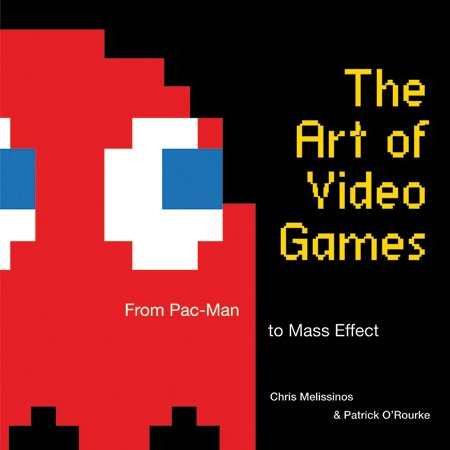The Art of Video Games
From Pac Man to Mass Effect
Video games are art. So says The Art of Video Games simply by existing. A codified complement to an exhibit of the same name that opened in March at the Smithsonian American Art Museum, the book enters a cultural discussion that has spawned as many angry message board posts as it has aloof declarations from critics. (Roger Ebert rather famously declared that games are not—will never be—art. The response from gamer culture was less than polite.)
To their credit, authors Chris Melissinos, Sun Microsystems’ Chief Gaming Officer, and Patrick O’Rourke, a freelance graphic designer, photographer, and video editor, do not get bogged down by the potential to pontificate. This handsome coffee-table book is an embodiment of “show” over “tell.” A few pages of introduction lay the groundwork for the catalog that follows, which takes eighty video games from the industry’s forty-year history and sorts them into five chronological eras and four broad genres. Interestingly, the games included were chosen in part by popular opinion via online polls, lending the entire affair a populist feel with the inclusive approach to art assumed by the authors.
The selection is impressive in its depth and breadth, running from an obscure 1983 Commodore 64 game, Attack of the Mutant Camels, to gems from all eras, such as The Legend of Zelda (1987) and BioShock (2007). Each game is presented as a two-page spread of imagery accompanied by a very brief essay placing it in context in the development of games as an art form. Though brief, the essays are thoughtful and interesting and offer insights even for indoctrinated gamers. Interspersed throughout the game coverage are similar spreads featuring interviews with big names in the world of games, like cult-favorite designer Tim Schafer (The Secret of Monkey Island, Psychonauts).
One or two oversights detract from the book’s reading and viewing experience. First, a few game series seem overrepresented (Zelda games, for instance), though the book does generally find new things to say about each iteration. Second, there’s no index or table of contents that lists all of the games included, which can make navigation a pain. Still, this is a book recommended to anyone who enjoys video games or popular art. Aloof cultural critics could stand to take a look, too.
Reviewed by
Kenrick Vezina
Disclosure: This article is not an endorsement, but a review. The publisher of this book provided free copies of the book to have their book reviewed by a professional reviewer. No fee was paid by the publisher for this review. Foreword Reviews only recommends books that we love. Foreword Magazine, Inc. is disclosing this in accordance with the Federal Trade Commission’s 16 CFR, Part 255.

